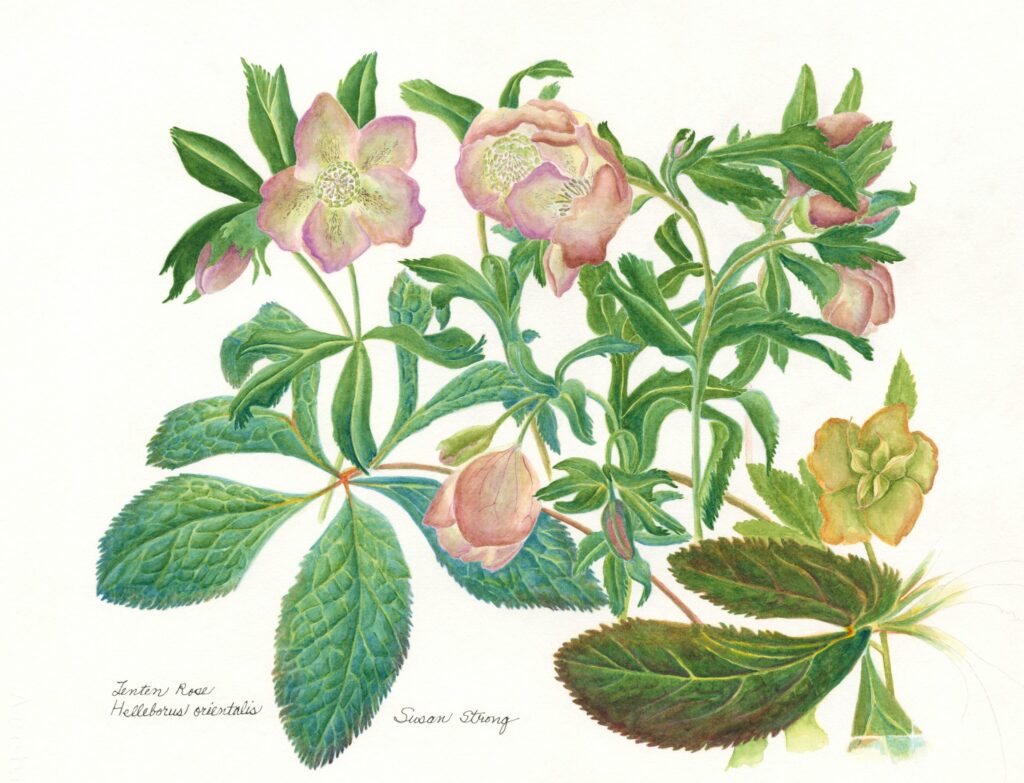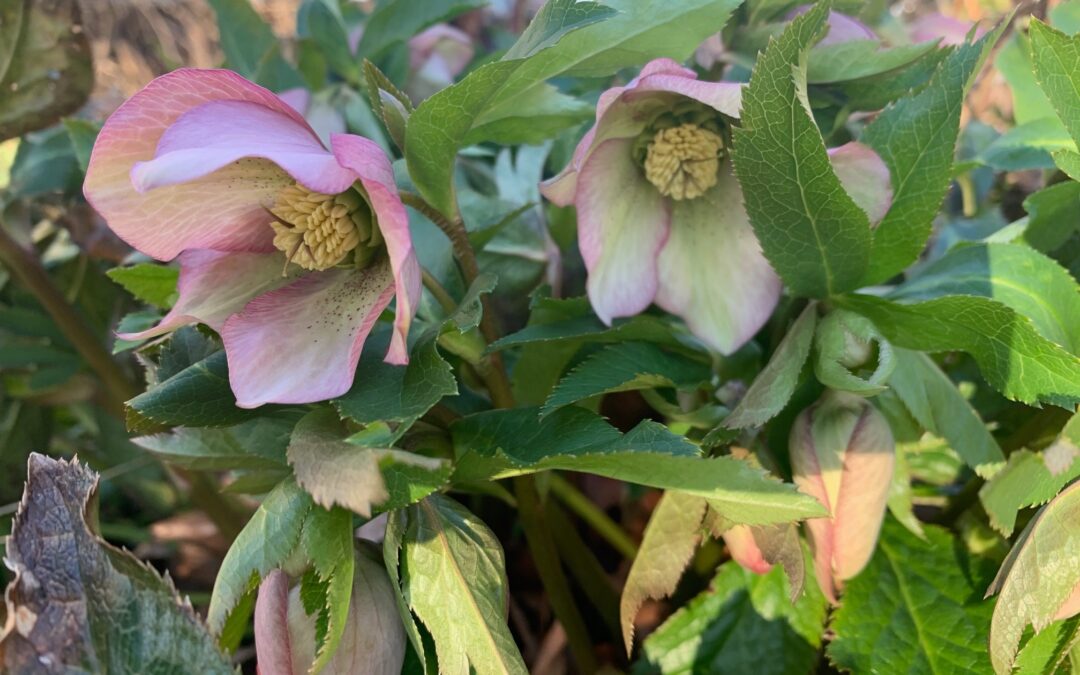I had never heard of a hellebore before we moved south to West Virginia. They are originally a Eurasian flower from the family Ranunculaceae. Other more familiar flowers in that family are the buttercup (Ranunculus acris) and the Canadian anemone (Anemomone canadensis).
Hellebores are sometimes referred to as the Lenten Rose. Indeed, this year they are just in time for Lent. But they are not roses.
It just snowed here and is melting away, but the hellebores in my daughter’s garden show no signs of stress from the snow. They also tolerate freezing with no apparent damage. They do not tolerate long hard freezes, because I have never seen them in Wisconsin. They cannot survive long cold winters. Virginia, Maryland and the Carolinas are a perfect region for them to flourish in the United States.
The parts of the flower that look like white petals are really not petals at all. They are sepals. In most flowers the sepals are green and protect the more fragile petals until the flower opens. Usually it is the petals that have bright colors to attract pollinators. With hellebores it is different. The sepals open and the petals are small cup-like structures that hold nectar.

I was surprised to learn that hellebores are poisonous and can cause serious complications if eaten. The alkaloids and glucosides that are poisonous can also cause a skin rash, if the leaves or seeds are handled without gloves. This makes sense to me, because other members of this family, which are familiar to me, such as buttercups and anemones are never eaten by deer or rabbits. The alkaloids present in their leaves would deter these animals. In my daughter’s garden the hellebores are never touched by deer, though many other flowers are eaten to the ground.
It is still quite cold. What pollinates hellebores? There are no bees around today.
My tulips and daffodils are above ground, but they are still quite a long way from flowering. What is in your garden? Has it shown itself above ground?


